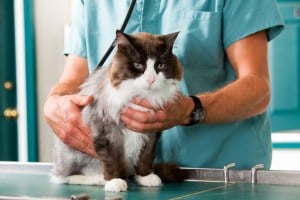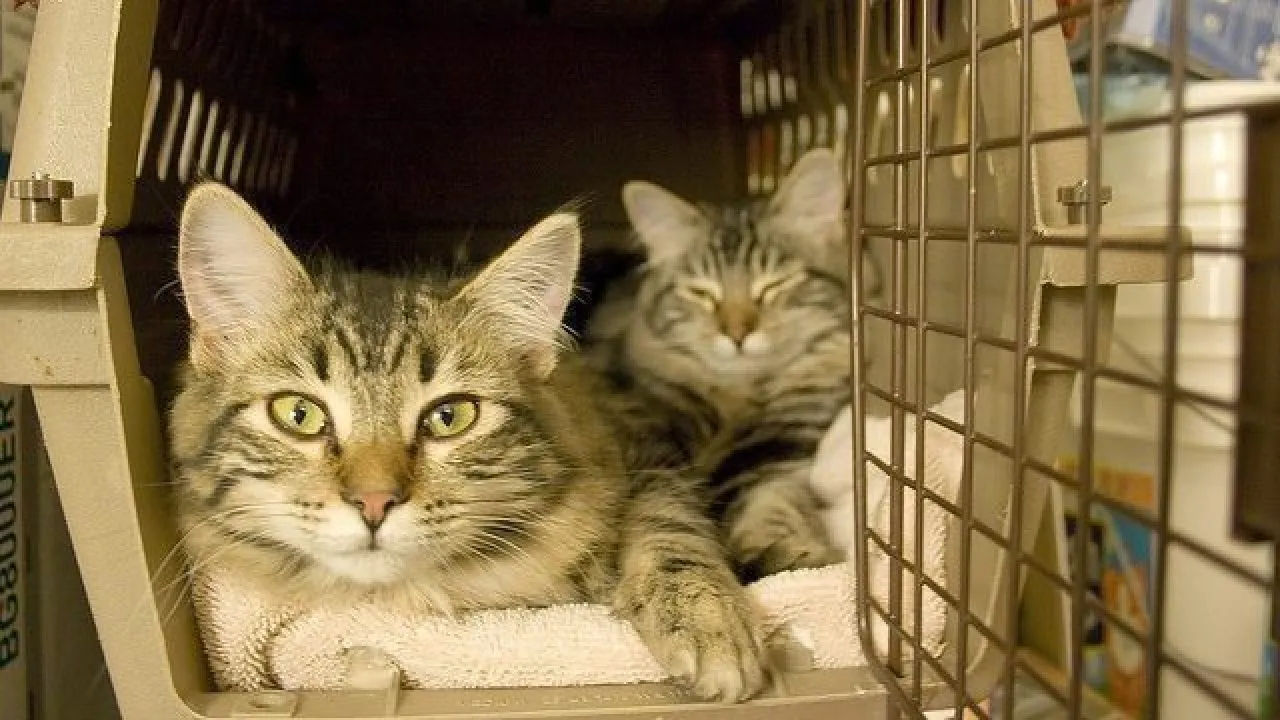 What’s one thing your cat dreads? A veterinary visit. And perhaps that dread spreads to cat parents as, according to the American Veterinary Medical Association, more than 50% of cats don’t have yearly veterinary visits.
What’s one thing your cat dreads? A veterinary visit. And perhaps that dread spreads to cat parents as, according to the American Veterinary Medical Association, more than 50% of cats don’t have yearly veterinary visits.
Feline expert John Bradshaw, the author of the book Cat Sense, talked to Healthy Paws about how to take the terror out of the experience. Even though cats hate going to the veterinarian, Bradshaw says, “It’s good for their health, and a little bit of training can help make the process pleasant for both cat and cat owner.”
As a cat parent, you may wonder why your cat hates going to the vet. Here are the five stages of what (we guess) cats may be thinking and a few tips to help make the process less stressful for you and your cat.
Stage One: Denial
Your cat: No big deal, human probably got the cat carrier out just to clean it.

Unlike dogs, cats don’t leave the house much, except for going somewhere they don’t like, like the vet’s office. Additionally, the only time most cats see their carriers is when it’s time to go to their least favorite place. So, carrier=bad things on the horizon.
So, how can you change that equation? “Train them to get used to being in the carrier and enjoying it,” Bradshaw says. Here a few tips:
- Choose an ideal carrier. Top-loading carriers are a great choice. Your cat can climb in and out of it at their leisure at home, and you or your vet can gently lift your cat in or out of the carrier at the vet’s office.
- Leave the carrier out all the time. When the carrier becomes like another piece of furniture, your cat won’t dislike it so much.
- Make the carrier inviting. Cats like cozy, den-like spaces. Put your cat’s favorite blankets and toys in the carrier, along with the occasional tasty treat.
- Feed your cat in the carrier. If your cat can eat her meals in the carrier, you’ll know that she’s comfortable being inside of it.
- Take your cat on short car rides. Car rides for cats don’t have to just mean trips to the vet or a boarding facility. Take a spin around the neighborhood with your cat.
Stage Two: Disappearing Act
Your cat: Now you see me, now you don’t.
If your cat’s uncomfortable with the carrier, she’ll run and hide when she sees it. Entice her out of hiding with an irresistible scent or sound. Open a can of her favorite food or shake a bag of her favorite treats. The temptation of yummy food will probably outweigh her dread of the carrier.
Stage Three: Objection
Your cat: Nope, I won’t do it. I’m absolutely not OK with this.

Even with your cat out of hiding, she still may not want to get in the carrier. In addition to the tips in Stage One, take things up a notch with a few special touches:
- Catnip: Cats love catnip! A little catnip in the carrier helps some cats relax, making a trip to the vet much more pleasant.
- Pheromones: Pheromones are natural body scents that trigger behavior changes, such as relaxation. Spray a cat pheromone in the carrier to relax your cat.
- Cat’s scent: Your cat probably won’t mind going somewhere that already has her scent. Gently rub your cat’s face with a small towel, then rub it along the inside of the carrier to fill the carrier with her scent.
- Clothing: Which family member does your cat like the best? Place a clothing item belonging to that person in the carrier. Your cat may snuggle up to that item in the carrier.
Consider trying one of these tactics while your cat is in hiding.
Stage Four: Bargaining
Your cat: I promise to leave the goldfish alone. I promise to stop kicking the litter out of my litter box.

Once in the carrier, your cat may do her best to get out of it. She’ll take you on a guilt trip with persistent meowing and scratching. Don’t give in, though. Try these tips to calm her down:
- Drive carefully, with no sharp turns.
- Talk to her in a calm, reassuring voice.
- Secure the carrier snugly with a seat belt.
- Drape a towel or blanket to make the carrier feel like a den.
Stage Five: Acceptance
Your cat: You didn’t mention that there would be treats or head scratches. This isn’t so bad.
Using the tips in Stages One through Four will help your cat accept that going to the vet isn’t so bad after all. Eventually, your cat might even enjoy car rides to the vet. Acceptance will take time, though, so be patient.
Some cats, no matter what, can’t overcome their dread of the carrier and vet’s office. These cats may need some mild sedation. If this sounds like your cat, talk to your veterinarian about giving your cat a sedative before the car ride.
Content provided by JoAnna Pendergrass, DVM. Dr. Pendergrass is owner and founder of JPen Communications, a medical communications company specializing in consumer education.






